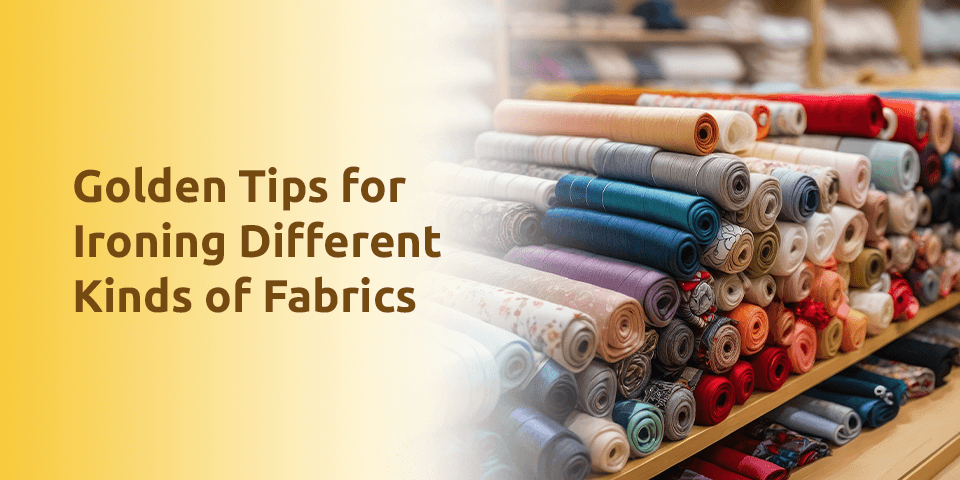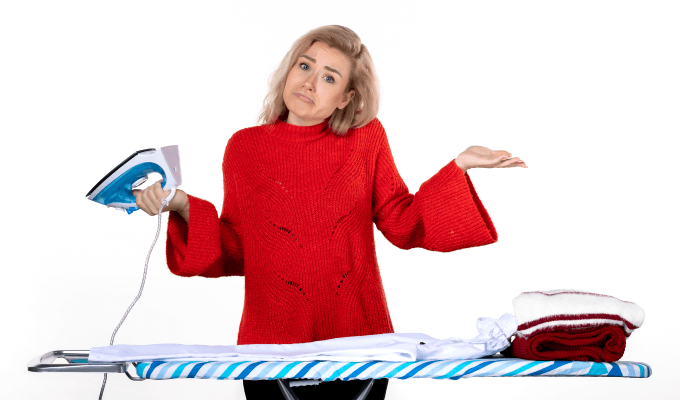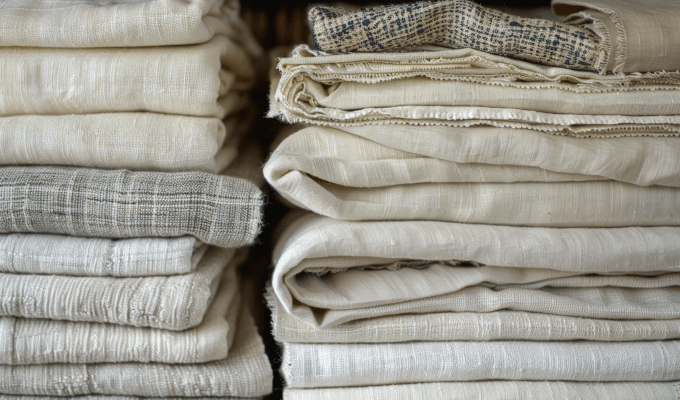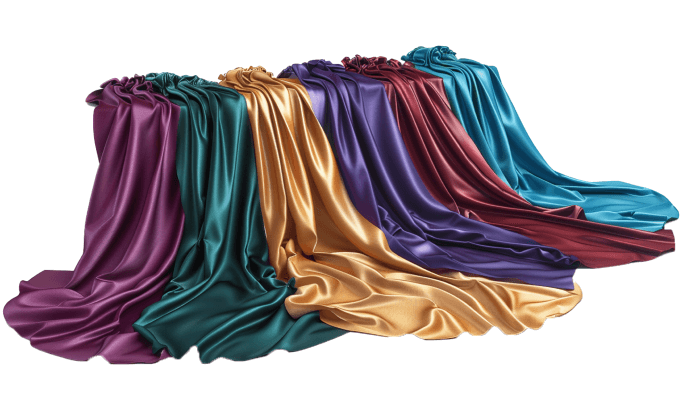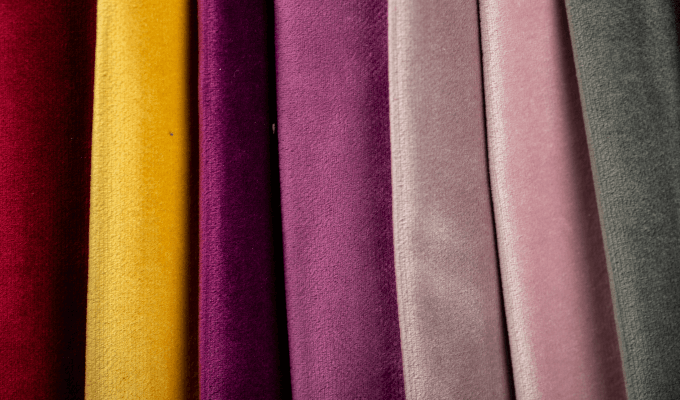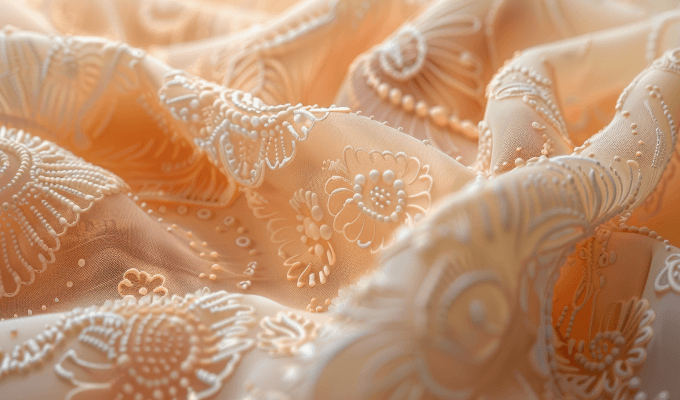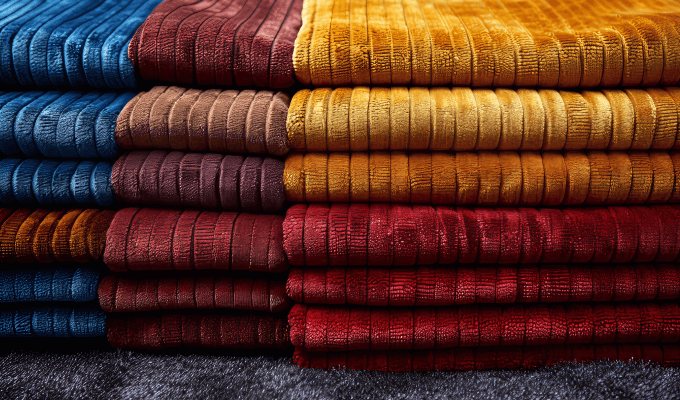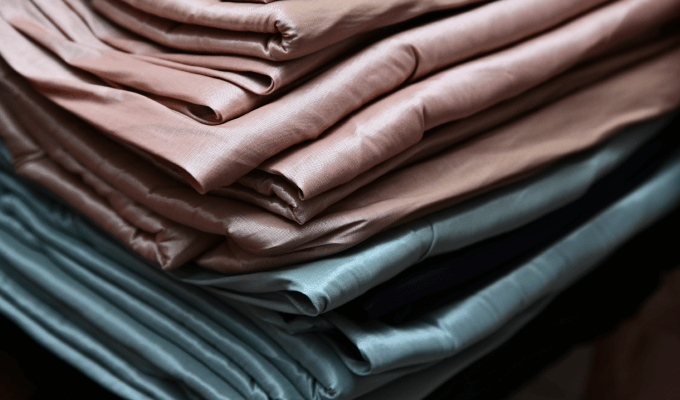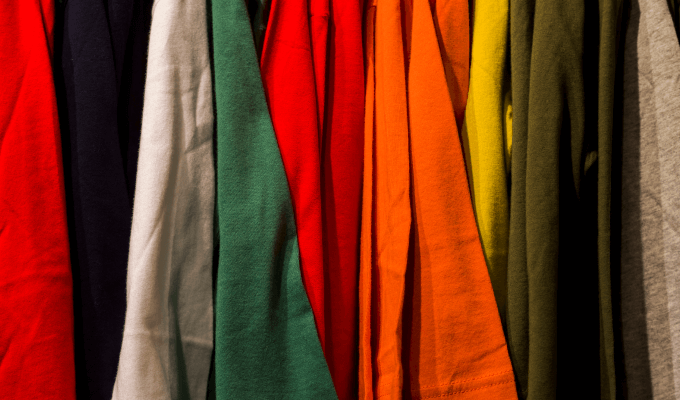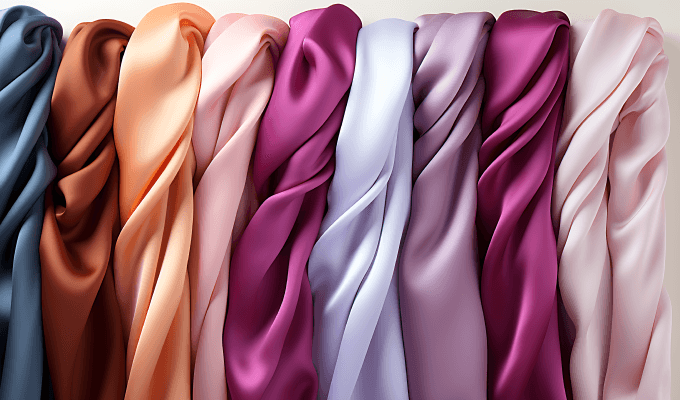Golden Tips for Ironing Different Kinds of Fabrics

Machine Wash vs. Hand Wash: Unveiling the Comparative Guide
July 25, 2024
Guide on How to Remove Blood Stains from Clothes
October 21, 2024Ironing is not only done to get rid of wrinkles but it also helps in maintaining the quality and longevity of your clothes. Each fabric has its own requirement for ironing and learning about ironing different kinds of fabrics can make a huge difference and help to achieve professional results while avoiding common pitfalls like shrinkage, burns, or fabric damage. This blog will guide you with the best tips for ironing various fabrics to keep your clothes well-maintained.
Make ironing easy with our fabric-specific advice!
A] Dry Iron vs Steam Iron
Let’s understand dry iron vs steam iron. It’s not just about picking up whatever is on sale, knowing the difference can save your clothes and money.
Dry Iron
It is a traditional method of ironing, using heat and pressure to remove wrinkles. It is great for fabric types like silk or synthetics that don’t require additional moisture. However, dry iron might struggle to remove wrinkles from thicker fabrics.
Steam Iron
Steam iron is a modern method of ironing for thicker fabrics like cotton, linen, and denim. It adds moisture to relax the fabric fibres for effective results. You can use it for hanging clothes and curtains too. Just be careful with the type of water you use, as hard water can leave a water spot on your clothes. Lastly, make sure you clean steam iron on a regular basis before using it to keep away from stains.
B] Exploring Ironing Tips for Various Fabrics Types
Every fabric is unique and requires a different iron setting. Here are some tips on how to iron clothes to keep them looking fresh and wrinkle-free.
1. Cotton
Iron Setting: High
Tips:
– Ironing cotton fabrics while damp gives the best results; use a spray bottle if necessary.
– Utilise steam for stubborn wrinkles.
– Iron dark cotton inside out to prevent shine.
– Iron the underside first, then the visible side for collars and cuffs.
– Use starch sparingly for a crisp finish on dress shirts.
– Pay extra attention to seams and pleats, ensuring they lie flat.
2. Linen
Iron Setting: High
Tips:
– Iron while damp or use a spray bottle to dampen the fabric.
– Use maximum steam for deep wrinkles.
– Iron dark linens inside out to prevent shine.
– For a crisp finish, use starch sparingly.
– Iron in the direction of the fabric’s grain.
– Hang immediately after ironing to prevent new wrinkles from forming.
3. Silk
Iron Setting: Low
Tips:
– Use a pressing cloth to prevent shine and protect the delicate fabric.
– Iron on the wrong side of the fabric whenever possible.
– Never use steam, as it can leave water stains.
– Hang immediately after ironing to prevent new wrinkles.
– For stubborn wrinkles, use the lowest heat setting.
– Avoid ironing embellishments or printed areas directly.
4. Wool
Iron Setting: Medium
Tips:
– Use a pressing cloth to prevent shine and protect the fabric.
– Steam generously to remove wrinkles without direct contact.
– Avoid applying direct heat to prevent scorching.
– Press the iron, don’t slide it, to maintain the fabric’s texture.
– Hang wool items to let them dry completely before wearing them.
5. Polyester
Iron Setting: Low to Medium
Tips:
– Use a low temperature to prevent fabric damage.
– Iron inside out to prevent shine on the visible side.
– Avoid steam, as it can create water spots.
– Use swift, light motions to prevent damage.
– For stubborn wrinkles, gradually increase heat, but stay vigilant.
– Hang polyester items immediately after ironing.
6. Delicate and Embellished Fabrics
Iron Setting: Lowest setting or as per garment label
Tips:
– Always use a pressing cloth to protect delicate materials.
– Iron embellishments face down on a soft towel to preserve their shape.
– Avoid direct heat on sequins, beads, or other embellishments.
– Consider steaming instead of ironing for very delicate items.
– Test any ironing method on an inconspicuous area first.
– Hand-press delicate areas using the cloth to distribute heat evenly.
7. Corduroy
Iron Setting: Medium
Tips:
– Iron inside out to protect the pile and prevent flattening.
– Use a pressing cloth if ironing on the right side is necessary.
– Steam generously to remove wrinkles without direct contact.
– Brush the pile after ironing to restore texture and appearance.
– Avoid excessive pressure to maintain the fabric’s distinctive ridges.
– Hang immediately after ironing to allow the pile to settle properly.
8. Acetate
Iron Setting: Low
Tips:
– Use a pressing cloth to prevent melting and protect the fabric.
– Avoid steam, which can leave water marks on the sensitive material.
– Iron on the wrong side of the fabric whenever possible.
– Use quick, light strokes to prevent damage and minimise heat exposure.
– Test the iron’s heat on an inconspicuous area before proceeding.
– Allow the fabric to drycompletely before handling to prevent stretching.
9. Rayon
Iron Setting: Low to Medium
Tips:
– Iron while slightly damp for best results.
– Use a pressing cloth to prevent shine and protect the fabric.
– Iron on the wrong side when possible to preserve the fabric’s appearance.
– Avoid excessive heat or steam, which can cause shrinkage or damage.
– Use gentle, sweeping motions rather than pressing hard.
– Hang rayon items immediately after ironing to prevent new wrinkles.
10. Satin
Iron Setting: Low
Tips:
– Iron on the hidden side of the fabric to preserve its sheen.
– Use a pressing cloth to protect the delicate surface.
– Avoid steam iron to prevent water spots, which can be difficult to remove.
– Iron in one direction to maintain the fabric’s smooth appearance.
– Use minimal pressure to avoid flattening the fabric’s characteristic lustre.
– Hang satin items immediately after ironing to maintain their shape.
Make ironing easy with our fabric-specific advice!
Conclusion
Ironing is not just about getting rid of wrinkles. It plays a big role in maintaining fabric quality and longevity. By understanding the types and techniques of ironing different kinds of fabrics, you can keep prevent shrinkage and damage. However, to extend the life of your garment, it’s equally important to use the right washing method and explore our fabric washing tips to ensure your clothes are in top condition. For further assistance and laundry requirements, don’t hesitate to contact us. We have been providing professional laundry services in Mumbai since 1980. Give your garment the best possible care.

